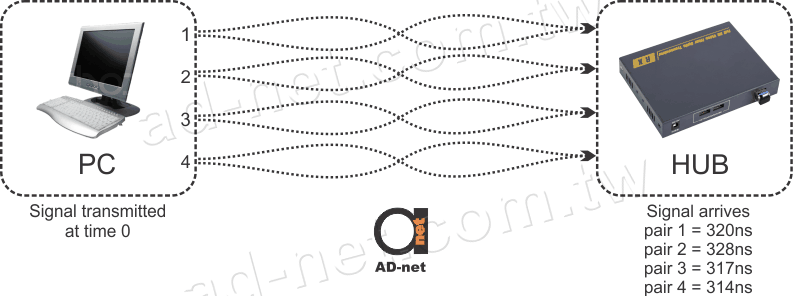External Interference
Modern world is based on electricity and electrical components, which generate a lot of EMI. The higher is the current, the more it would be affecting other devices or cables. Even though most of cables are designed with the consideration of external interference, the level of interference cannot be predicted.
Most common sources of EMI in typical office include fluorescent lights, electrical wiring, elevators, TVs, laser printers and heating/conditioning equipment. While designing the network layout, it is important to avoid places where signal can be interferenced with. Most common mistake, putting data cables together with electrical wiring. However, if the data is transmitted over the optical cable, it would not be affected by EMI in any way.
Propagation Delay
Electrical signal travels at constant speed, which depends on the material of the cable, insulator, and dielectric constant. Propagation delay, is the time it takes for signal to travel from one end of the cable to the other one.
Delay Skew
Excessive delay or delay skew might happen during data transmission when the wires in the cable are being different lengths. That results in signal delay, since data will not arrive at the same time. It is important to remember that delay could not be more than 50ns, otherwise it could cause problems with network transceivers. Since equipment will not receive data on time, it would send resend request, which will result in signal delays.



